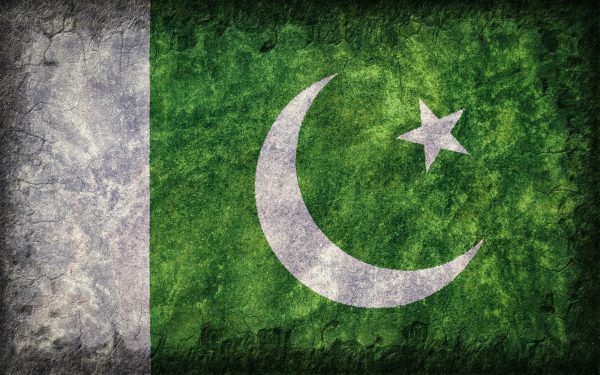The Taliban have returned to power in Afghanistan. Far from a victory, that could ultimately be a setback for Pakistan.
Pakistan had already won the Afghanistan war when the Trump administration signed a deal with the Taliban last year. The fall of Kabul has formalized the triumph. Or so the narrative reverberating in Islamabad, and around the world, goes.
The army’s “good Taliban, bad Taliban” strategy has been rooted in distinguishing between jihadist groups that target Pakistan and those that can be controlled to fulfill the geostrategic objectives of the military establishment. The return of the Taliban to power in Afghanistan is naturally considered the culmination of two decades of Pakistan providing the group, and its affiliates, with havens to sustain themselves until the departure of the U.S.-led coalition.
And yet, the endgame wasn’t bringing the Taliban back to power; it was setting up a radical Islamist regime that would toe Pakistan’s line in the region. Viewed through this lens, Pakistan’s success is less certain.
Moments after taking charge in Kabul, the Afghan Taliban released leaders of the Tehrik-e-Taliban Pakistan (TTP), including former deputy chief Faqir Mohammad. The Afghan Taliban have released around 2,300 leaders of the TTP, who have duly felicitated the former for taking over Kabul, after having already pledged allegiance to Hibatullah Akhundzada.
The Taliban are already negotiating with India. They have called the Kashmir issue “internal and bilateral,” clarifying that the jihadist group, at the very least, does not intend to take sides in a conflict that Pakistan has actively Islamized.
Enjoying this article? Click here to subscribe for full access. Just $5 a month.
Pakistan’s premise of backing Taliban rule in Afghanistan to counter “Hindu India,” conceived almost half a century before the Narendra Modi-led Bharatiya Janata Party (BJP) regime came to power, is unraveling amid uninhibited Islamist-Hindutva engagement.
This, along with the booming alliance of Taliban on both sides of the Af-Pak border, begs the question of whether Pakistan, and its “good Taliban, bad Taliban” strategy, has actually been victorious. Even more ominously, the developments suggest that as much as Pakistan used Taliban for its gains, so too did the Taliban use Pakistan for its gains.
Diplomat Brief Weekly Newsletter N Get briefed on the story of the week, and developing stories to watch across the Asia-Pacific. Get the Newsletter
We are witnessing the Taliban’s rendition of a “good/bad” strategy. “Good” Pakistan helped Taliban leaders dodge the U.S.-led forces, while diverting some of the resources taken from the West toward the Taliban. “Bad” Pakistan now believes the Taliban have any geopolitical, or ideological, obligation to reciprocate.
To ensure Talibanization in Afghanistan, and Islamist inertia at home, Pakistan sacrificed over 80,000 of its citizens, which the military establishment has loudly dubbed “collateral damage.” The investment in the project was to such an extent that immediately after the Trump-Taliban deal, Prime Minister Imran Khan began echoing eulogies for Osama bin Laden. This week, Khan touted the Taliban takeover as “breaking shackles of slavery,” prompting demands in the United States to cut aid to Pakistan. The ubiquitous cheerleading for the Taliban’s triumph delineates the extent to which the pro-Taliban Islamist rhetoric has been etched in Pakistan.
While Pakistan’s Islamization was an inevitable corollary of its birth and sustenance as a multiethnic realm, the mullah-military takeover has been the result of both regional and domestic ambitions of the army. This has translated into a political setup in Pakistan where today both the prime minister and the leader of the antigovernment opposition coalition are unflinching Taliban cheerleaders. However, in the decades dedicated to sustaining an Afghanistan that suits the Taliban, the military establishment has also created a Pakistan that suits the Taliban.
The Taliban’s vocal allies, this side of the border, are those that excommunicated the Pakistan Army and launched some of the most brutal attacks in the country to “establish true Islam.” The gory Islamic Sharia might be incorporated in the Pakistan Penal Code, but will be more visibly implemented in Afghanistan. The rhetoric of Medina state might be echoing in Islamabad, but will be more accurately mimicked in Kabul. What, then, is stopping the Taliban from channeling these political narratives, and its jihadist allies, to aspire to align Pakistan with Afghanistan’s strategic interests, and not the other way around?
Pakistan, and the army that runs it, are completely subservient to China, but have failed to reassure Beijing that Islamabad can safeguard the China-Pakistan Economic Corridor (CPEC) from the country’s multipronged militancy. Such has been the fixation with Talibanization in Afghanistan that Islamabad has seemingly been willing to alienate China just to cling on to its duplicitous security policy of picking and choosing jihadist groups, which the establishment believes are its sure-shot bet to dictate matters along the Af-Pak border. What if the Taliban convince Beijing that they can be better orchestrator of these groups?
Already agreeing to facilitate China’s crackdown on Uyghur separatists and the East Turkestan Islamic Movement, the Taliban have $1 trillion worth of Afghanistan’s mineral wealth to offer Beijing as well. If the group can also become a more convincing guarantor of projects currently affiliated with CPEC, the fulcrum of the $1.9 trillion worth Belt and Road Initiative (BRI), not only can the Taliban forge a stronger alliance with China, the group can also help extend its influence across the Af-Pak frontier, which it doesn’t recognize as a border.
The Pakistani Taliban have duly been making gains in synchrony with the Afghan Taliban’s return to power. And if South Asian jihadist outfits continue to gravitate toward the consolidated Islamic Emirate, they would be more than willing to create turmoil in Pakistan as the Taliban’s strategic assets.
